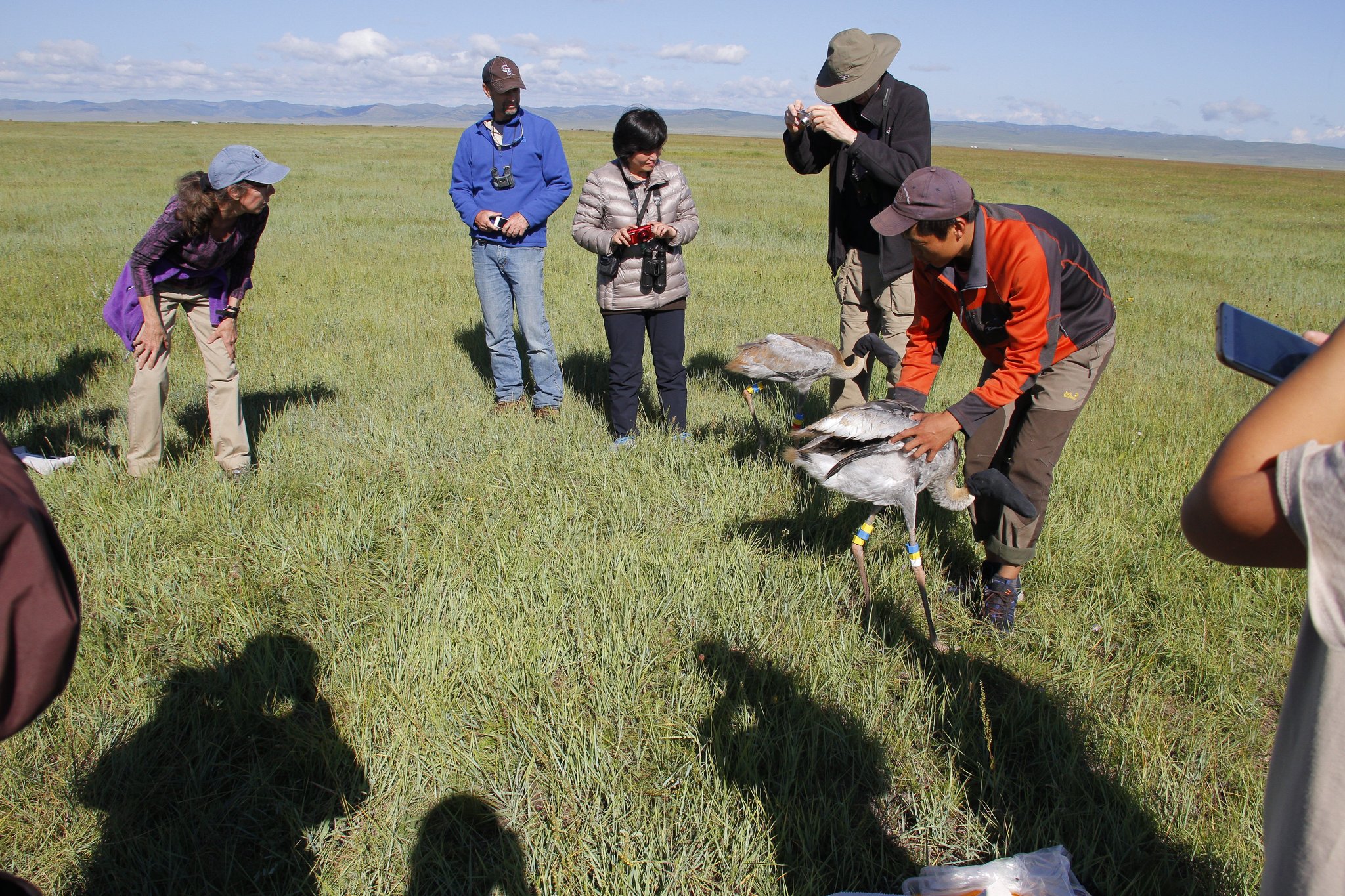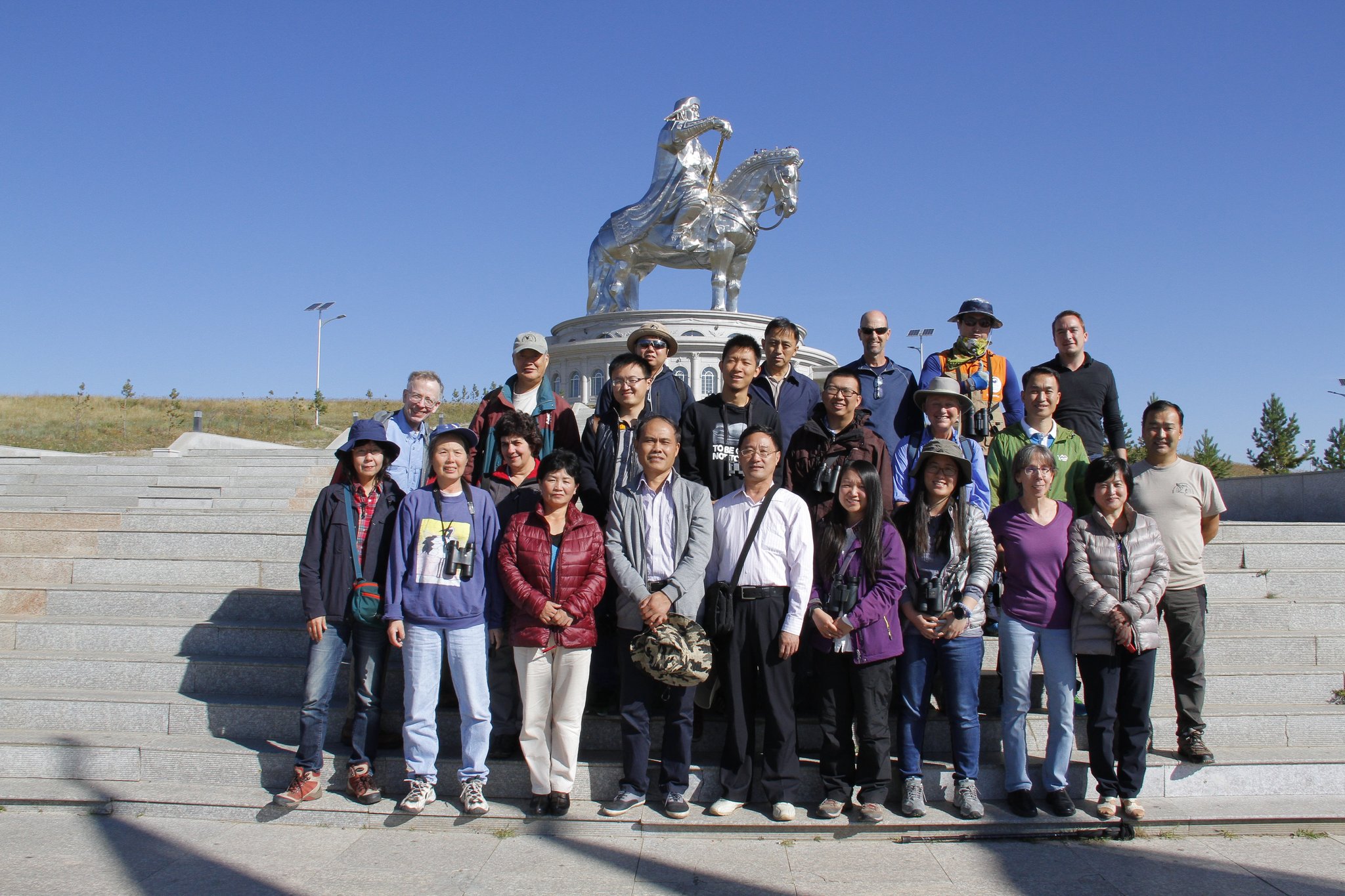Mongolia hosts a meeting of crane experts from East Asia
All six countries in North East Asia gathered together in Mongolia to finalize white-naped crane conservation strategy.
East Asia is home to eight crane species, the most diverse of any region including the Vulnerable White-naped Crane. Our Mongolian White-naped Crane project aims to strengthen international cooperation, and hosts crane and wetland researchers from other range countries at our main project site in the Khurkh and Khuiten River Valleys. In August 2016, all six range countries in East Asia and leading international and local conservation organizations met together for the first time in Mongolia to discuss future crane conservation strategies for the region.

Over 55 people attended this workshop, entitled Strengthening Wetland Biodiversity Conservation in East Asia: Using the White-naped Crane as a Flagship Species, including 23 participants from Japan, North Korea, South Korea, China, Russia, Mongolia, Germany, and the United States. It was valuable to have delegates from the North Korea that has several important stopover locations for cranes.

During the workshop, participants updated information on status and conservation priorities for the White-naped Cranes that were last published 20 years ago in the 1996 IUCN Crane Action Plan. This information will be distributed in 2018 as part of the updated IUCN Crane Conservation Strategy. Participants also revised a Species Assessment summarizing changes in distribution and status of key sites; population numbers and trends; threats for breeding, migratory stopover, and wintering areas; significant conservation and research efforts; and key changes since 1996.
The workshop provided a unique opportunity for our project to showcase our achievements on White-naped Crane conservation in Mongolia and welcome world famous crane experts to the beautiful valley.

